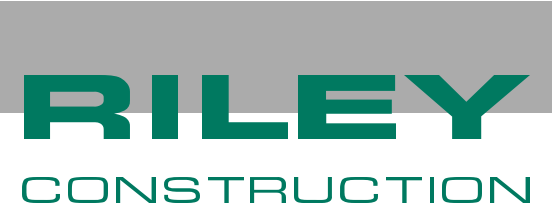Riley Construction just reached 1,000 days without a lost time injury, equal to 1,191,479 man hours! This is a very important milestone that has only been reached because everyone is involved in the safety process.
We believe that every accident is preventable, and that philosophy is embedded into every project through a combination of field procedures and ongoing safety training. Riley’s goal is for all employees, subcontractors and clients to return home to their families safely every evening. We attribute our safety success in part to having a formal, complete safety and health program in place.
Safety and Health Programs
The first item needed to be safe in construction is a formal Safety and Health Program describing the organization’s commitment to safety and health, and pledging to establish and maintain a safety and health program for all workers. Expectations are spelled out, safety and health concerns are considered in all business decisions, and resources are available to implement the safety and health program. The main goal of safety and health programs is to prevent workplace injuries, illnesses, and deaths, as well as the suffering and financial hardship these events can cause for workers, their families, and employers.
Safety and health programs foster a proactive approach to “finding and fixing” job site hazards before they can cause injury or illness. Rather than reacting to an incident, management and workers collaborate to identify and solve issues before they occur. This collaboration builds trust, enhances communication, and often leads to other business improvements.
To be effective, any safety and health program needs the meaningful participation of workers and their representatives. Workers have much to gain from a successful program, and the most to lose if the program fails. They also often know the most about potential hazards associated with their jobs. Successful programs tap into this knowledge base. Worker participation means participation in establishing, operating, evaluating, and improving the safety and health program.
All workers:
- Are encouraged to participate in the program and feel comfortable providing input and reporting safety or health concerns.
- Have access to information they need to participate effectively in the program.
- Have opportunities to participate in all phases of program design and implementation.
- Are encouraged to raise safety and health concerns; report injuries, illnesses, and hazards; participate in the program; and exercise safety and health rights.
Workers are often best positioned to identify safety and health concerns, such as emerging job site hazards, unsafe conditions, close calls/near misses, and actual incidents. By encouraging reporting and following up promptly on all reports, employers can address issues before someone gets hurt or becomes ill.
Including worker input at every step of program design and implementation improves the ability to identify the presence and causes of job site hazards, creates a sense of program ownership among workers, enhances their understanding of how the program works, and helps sustain the program over time.

